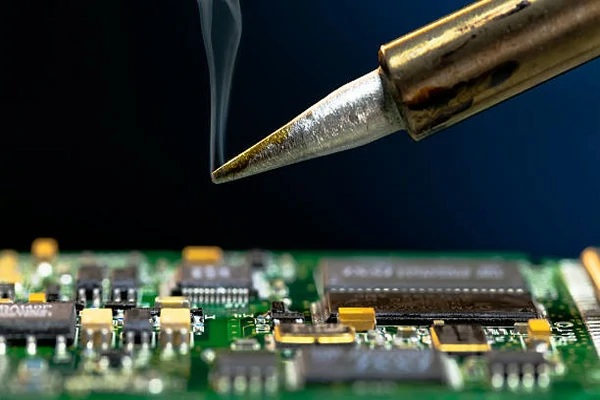
The use of electric iron for hand soldering is not difficult to master, but there are certain technical essentials. People who have been engaged in the production of electronic products for a long time improve the quality of soldering from four aspects: materials, tools, methods and operators.

Set Up Your Space:
Before you start, get a clean and organized workspace. Arrange your tools—soldering iron, solder wire, flux, and stand. Good ventilation is crucial to clear fumes produced during soldering.
Check Your Components:
Examine what you're soldering. Look for damage, proper orientation, and correct positioning on the board. This step prevents errors during soldering.
Choose Your Tools:
Pick the right soldering iron tip based on component size. Use a fine tip for small parts and a broader one for larger ones. Choose quality solder with the right flux for a clean, reliable joint.
Heat Up the Iron:
Let the soldering iron reach its operating temperature, which usually takes a few minutes. A well-heated iron ensures efficient heat transfer for effective soldering.
Apply Flux:
Add a bit of flux to the joint area. Flux enhances solder wetting and creates a strong connection. It also reduces oxidation, improving the soldering process.
Tin the Iron Tip:
Coat the iron tip with a thin layer of solder. This tinning process boosts heat transfer and aids soldering. Wipe off excess solder on a damp sponge to keep the tip clean.
Heat the Joint:
Place the iron tip on the joint, heating both the component lead and the board pad. Heat the components evenly for smooth solder flow.
Apply Solder:
Introduce solder to the joint, allowing it to melt and form a smooth connection. Avoid excess solder, as it can cause issues. A steady hand is crucial during this step.
Inspect the Joint:
After soldering, visually inspect the joint. A well-soldered joint appears shiny and smooth. Check for irregularities and touch up joints if needed for a reliable connection.
Mastering hand soldering is essential for electronics work. By following these simple steps, you can enhance your soldering skills and achieve pro-level results. Practice, attention to detail, and the right tools are key to becoming proficient in this crucial aspect of electronics assembly and repair.
 WhatsApp
WhatsApp